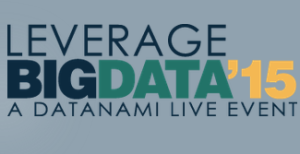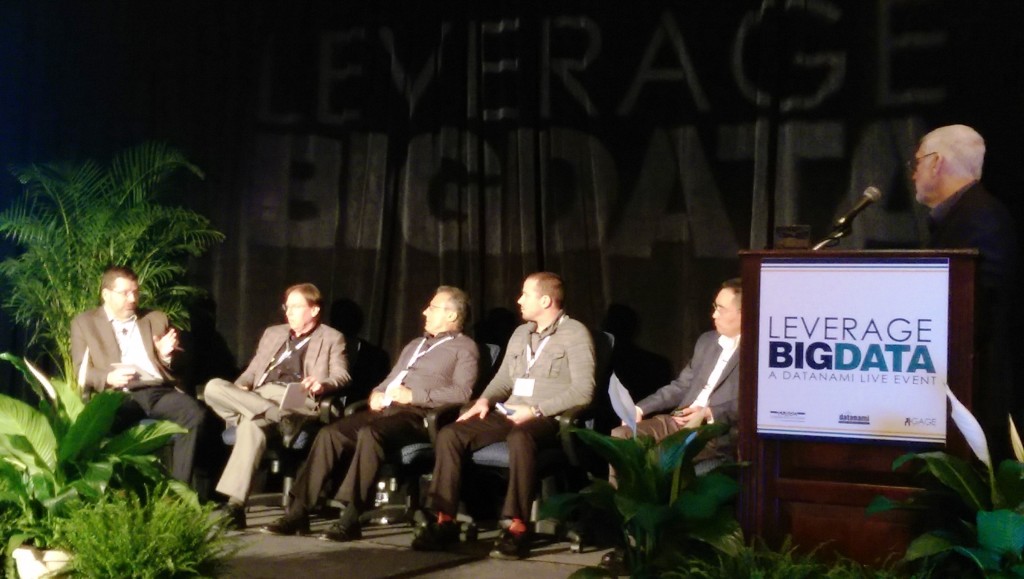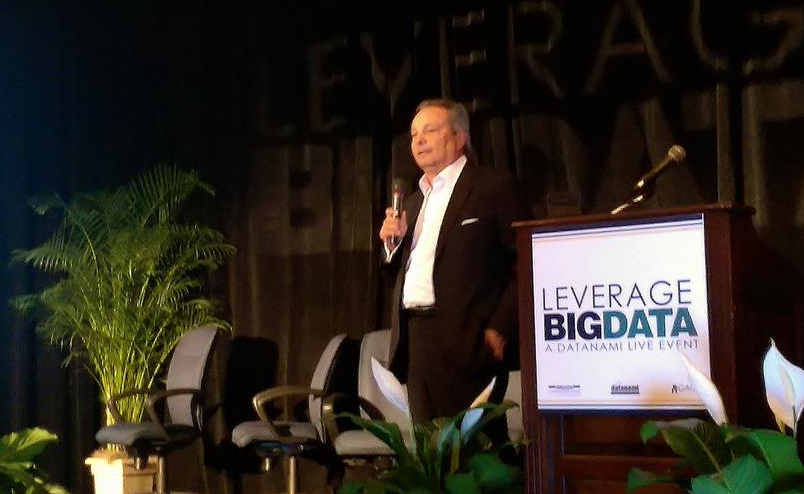
Leverage Big Data 2015 Yields Insightful Gems

Some of the brightest minds in the big data and HPC communities took the stage this week at Tabor Communications’ second annual Leverage Big Data conference, which took place at the beautiful Ponte Vedra Resort in Florida. From the impact of Hadoop to the cutting edge of FPGA research, attendees shared their big data lessons.
Big data is everywhere, said Molly Rector, CMO for DDN, who delivered a keynote Monday night. You may not know it, but whenever you use Google’s Web search, benefit from a spam filter, or buy something with a credit card, you’re using big data.
Hadoop may be the flag bearer for big data in many people’s minds, but big data goes far beyond the friendly yellow elephant at DDN. According to Rector, only 20 percent of DDN customers are running Hadoop on DDN storage gear. While Hadoop provides an excellent platform for low-cost storage, DDN is more focused on delivering high performance data analysis for its customers. A full 85 percent of DDN customers are using their DDN gear to do analytics, according to Rector. The capability to handle mixed I/O workloads is key to succeeding in big data, she says. Having an object store built into the storage system also helps.
IBM‘s Jacqueline Woods delivered a compelling keynote Tuesday morning about the types of characteristics that are common among organizations that are successfully using big data. Woods cited a recent study conducted by IBM’s Institute for Business Value, which analyzed the habits and attributes of more than 750 IT executives in 18 countries and found that less than 10 percent or organizations are ready to meet the business and architectural demands posed by big data, cloud, and social media.
Woods description of the all-important “Strategic IT Connectors” really resonated with attendees, which was an exclusive group of data scientists, engineers, HPC leaders, and executives from various industries who were invited by Tabor Communications to represent their organizations.
As Woods explained, Strategic IT Connectors are those organizations that achieve superior business results through their investment in IT best practices. IBM identified several commonalities among these organizations, including the fact that they plan for unusual but high impact events; leverage the cloud appropriately; and have a well-documented IT strategy.

Wednesday’s panelists, from left: Ron Van Holst, Jack Collins, Anthony Galassi, Shane Corder, Gary Yao (HTC), and John Russell.
Your Datanami managing editor hosted a panel that looked at some of the challenges confronting big data practitioners in different industries. Dr. Kirk Borne remarked on the similarities between the analysis he performs as an astrophysics professor at George Mason University and the consulting work he does in the CPG and retail space. Regardless of whether he’s looking at the data about red and blue galaxies or analyzing behavioral data pulled from ecommerce websites, the analyses pose similar challenges.
Kerry Hughes, who heads up the HPC and big data analytics practice at Dow Chemical, noted that having success is the best way to build a big data practice that’s can endure. The head of enterprise capabilities at Thomson Reuters, Asif Alam–who has been instrumental in introducing the concept of machine readable data into the trading practices of Wall Street firms–remarked on the importance of real-time analytics in the financial services industry. Meanwhile, Trevor Mason, the vice president of technology research at IRI Worldwide, noted how the sheer volume of data can easily explode when you begin mixing different data sets and cross-comparing their fields.
The volume problem is also affecting the genomics work that HPC systems engineer Shane Corder is doing at the Children’s Mercy Hospital of Kansas City. The speed at which Children’s Mercy can sequence a sick child’s DNA has a big impact on treatment selection and the overall outcome, he noted. A new generation of sequencers is expected to speed up the processing. But in the meantime, getting a complete genome sequenced (there are estimated to be between 20,000 and 25,000 human protein-coding genes in a given person) can still take weeks.
Tabor Communications editorial director John Russell hosted an informative panel at LBD that sought to identify some of the technological gaps that still exist in the big data world. Panelist Jack Collins, a director at the Frederick National Laboratory for Cancer Research, sees the possibility of using some of the lessons that Google and others have learned in the areas of deep learning and natural language processing (NLP) to further the understanding of how complex feedback loops impact the development of cancer. We’re all working in different problems in different industries, he said, but the solutions are similar.
Image processing is an area where Anthony Galassi, a deputy division chief at the National Geospatial Intelligence Agency, would like to see some progress. While the federal government has been working for decades to automate different pieces of the image collection and processing pipeline, Galassi hasn’t seen it all brought together in an elegant and scalable way. Humans are still better than computers at this work, he said, but eyeballs don’t scale.
Panelist Ron Van Holst, director of HPC research development at the Ontario Centres of Excellence, is looking forward to a new crop of hardware, such as the analog neuron circuits, FPGAs, and quantum computers from D-Wave Systems that will help make sense of big data. “There’s all kinds of really new hardware coming down the pike,” he said.
Supercomputer maker Cray and IBM tied for Best Case Study presentation during the second-annual Leverage Big Data awards, while DDN nabbed the award for Company To Look Out For. Dr. Kirk Borne took home the award for Top Overall Contributing Attendee.
All told it was a very successful event, says Tom Tabor, the CEO of Tabor Communications. The high level of participation by the attendees and the technical expertise provided by sponsors such Supermicro, Seagate, Univa, Lenovo, Bright Computing, and the Tabor Insights Group, combined to create a unique experience.
“HPC vendors like DDN, Cray, and IBM have been solving big data problems for years, and have a tremendous amount of experience in solving the real-world issues that customers are encountering as they attempt to scale up their big data proof of concepts into production systems,” Tabor said.
Stay tuned for news about the location and date for the next Leverage Big Data event.































